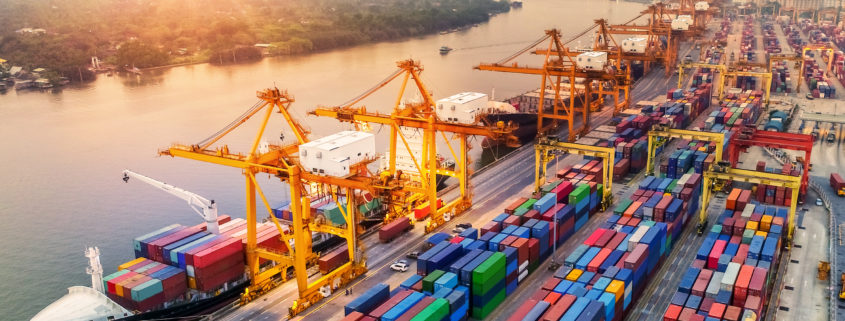Global container shipping growth forecast to rebound; trans-Pac reliability still an issue
By Bruce Abbe
In 2018, a slowing global economy helped put the brakes on growth rates for container shipping, the predominant method of international shipping used by most soya and grain exporter members of the Specialty Soya & Grains Alliance (SSGA). However, data from a leading shipping analytical firm points to a rebound of container shipping growth over the next two years. Shipping-schedule reliability, while improving, seems to have a long way to go over recent month’s performance, according to recent analytics.
Overall, global container shipping exhibits growth year-to-year, but rates of growth vary significantly based on a range of factors, from the health of the international economy, to trade relations, labor relations, politics and more influences.
According to IHS Markit, a leading international shipping information media company, global container volume increased 4 percent to 146.4 million Twenty-Foot Equivalent Units (TEU) in 2018, but that was down from 7.6 percent growth the year before.
However, in its report, “Trends in the World Economy and Trade,” IHS projected a turn-around in 2019, thanks to increasing demand from the five biggest container exporting countries – China, the U.S., South Korea, Japan and Thailand – all major markets for SSGA shippers. IHS forecasted a growth rate for those countries at roughly 4.8 percent through 2025.
Go here for more in-depth coverage from the Journal of Commerce (JOC).
Schedule reliability coming up “from the depths”
JOC also reported late last week that container shipping “schedule reliability,” as tracked on the various trade lanes, has been improving month-to-month as of late – but it is coming up from “record depths” for global carrier performance due to the volatility of trade over the past year.
Carrier reliability from Asia improved 12.9 percentage points overall during March over the month before, with considerably more improvement in schedule reliability to the West Coast compared to the East Coast.
The U.S.-China trade war, driven by President Trump’s threat to increase tariffs by 25 percent on Chinese sourced goods by an early March deadline and later delayed pending promise of trade talks, caused importers to rapidly ramp up container goods imports for several months late last year. The results caused huge logjams at key ports and in rail service to inland destinations that lasted for months and is now recovering.
Imports first climbed in July and August in response to the first imposition of a 10-percent tariff on Chinese goods. Then in November and December, in response to the threat of an additional 25 percent tariff on a wider range of goods, ocean carriers added 34 extra-loader vessels to support the increased import volumes. Los Angeles/Long Beach received the brunt of the increases. Then in the first months of 2019, carriers cancelled a number of vessel sailings in response to softening demand.
It should be noted that nearly all of these ocean carrier decisions are made in response to higher value import demand projections – the “head haul” in steamship line parlance – and rarely in response to exports from the U.S. – the “back haul.”
It remains to be seen if President Trump’s fresh threat this weekend to again institute a 25 percent tariff on a wider range of Chinese imports will cause a return to volatile shipping patterns that cause logjams at the port terminals and inland supply chains. But as of last week, JOC, reporting information from CargoSmart and SeaIntelligence data firms, pointed to continued improvement in shipping schedule reliability from Asia to the U.S.
Click here for more in-depth coverage.
Look for more firsthand analysis of global container shipping trends at the upcoming U.S. Soy Global Trade Exchange and Midwest Specialty Grains Conference and Tradeshow, hosted by SSGA and the U.S. Soybean Export Council in Chicago August 20-22. A panel of senior ocean carrier representatives is planned for a key session in Chicago, the largest inland hub for intermodal shipping in the U.S. Follow conference developments at www.grainconference.org.
Bruce Abbe is senior director of specialty grains, products and transportation for SSGA. Reach Bruce at 952-253-6231 or drop him a line here.







Leave a Reply
Want to join the discussion?Feel free to contribute!